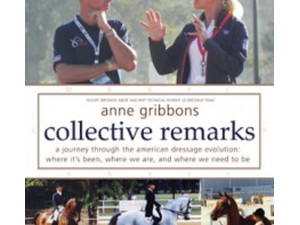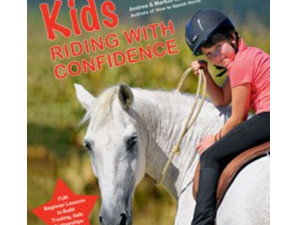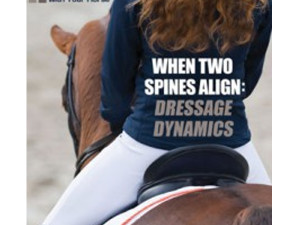Principles of Riding -Rev Edition
Principles of Riding -Rev Edition
$49.95
Principles of Riding -Rev Edition
Basic Training for Horse & Rider – German National Equestrian Federation
The first edition of The Principles of Riding was published more than 50 years ago, imparting mandatory basic knowledge for all areas of equestrian sport and horse-keeping and this 28th edition, Basic Training for Horse and Rider, has been completely revised regarding language and content, while still taking into account the well-established principles.
The consideration of traditional principles leads to the education and training of the horse according to its nature and thus to its health, well-being and performance capability. The horse’s instincts and natural behaviour are presented in detail as the basis of communication and understanding between horse and rider.
Paperback – 192 pages
In stock
Related products
Collective Remarks Anne Gribbons
Collective Remarks Anne Gribbons $39.95Collective Remarks Anne Gribbons Paperback
A journey through the American dressage evolution- where it’s been, where we are and where we need to be.
Almost 20 years Anne provided commentary on the state of dressage in the Unites States and around the world.
Anyone with an interest in dressage, its controversies, and its most famous names, will enjoy Anne’s stories, but the true value is in her ideas for improving our horses, our riders, and our ability to compete on the international scene with success and integrity in the years to come.
Kids Riding With Confidence
Kids Riding With Confidence $26.95Kids Riding With Confidence -Hardback
More easy-to-learn lessons in natural horsemanship for kids!
Andrea and Markus Eschbach, authors of the bestselling book How to Speak Horse, are back with another fabulously illustrated introduction to safe and fun horse handling and riding skills.
Beginning with the basics of how horses use body language to communicate, Andrea and Markus teach children how to “listen” to what their horse is saying and “talk back” in a way he understands while leading, grooming, tacking up, and eventually riding. With a focus on building the horse’s trust in his human partner, young riders gain confidence through exercises on horseback. Best of all, Andrea and Markus nurture a habit of care and respect for the horse that helps prepare children for a lifetime of rewarding time spent in the company of horses.
Ride Better with Christoph Hess
Ride Better with Christoph Hess $39.95Ride Better with Christoph Hess
Christoph Hess, a FEI Judge in both dressage and eventing, is highly respected around the world as a teacher of riding and the development of the horse according to classical principles. Here he collects some of his very best riding and training tips along with well-honed insight related to the topics that he finds most often challenge equestrians and their equine partners.
Ride Better with Christoph Hess provides thoughtful, easy-to-apply advice when dealing with issues with the gaits, in particular the walk and canter; high-headedness or the horse that is “too light” in the poll; inconsistency of performance; leaning on the bit; falling out; lack of straightness; and much more. Throughout Hess emphasises that a rider must always strive to improve, for the simple reason that you can always do better for your horse. While competitive and training goals do, of course, bring a certain satisfaction, it is having an equine partner who is contented in his work and happy in your company that rewards most. This lesson, and all Hess’s tips and solutions, are invaluable to equestrians of every level—everyone can walk away from this book a better rider.
When Two Spines Align
When Two Spines Align $69.95When Two Spines Align Dressage Dynamics by Beth Baumert Hardback
Within riding exists a fundamental conflict of interest: The rider needs to have control— confidence depends on ability to control the balance of own body as well as that of a very powerful horse. The horse, by nature, needs to feel free—free in both mind and body to express himself through physical movement.
Readers will discover how to use “positive tension” and what the author calls the four physical “Powerlines”—Vertical, Connecting, Spiraling, and Visual—to become balanced and effective in the saddle. Readers will then find ways to understand and manage the horse’s balance and coordination challenges, including the fact that he is inherently crooked and naturally inclined to do too much with his front end and not enough with his hind.






